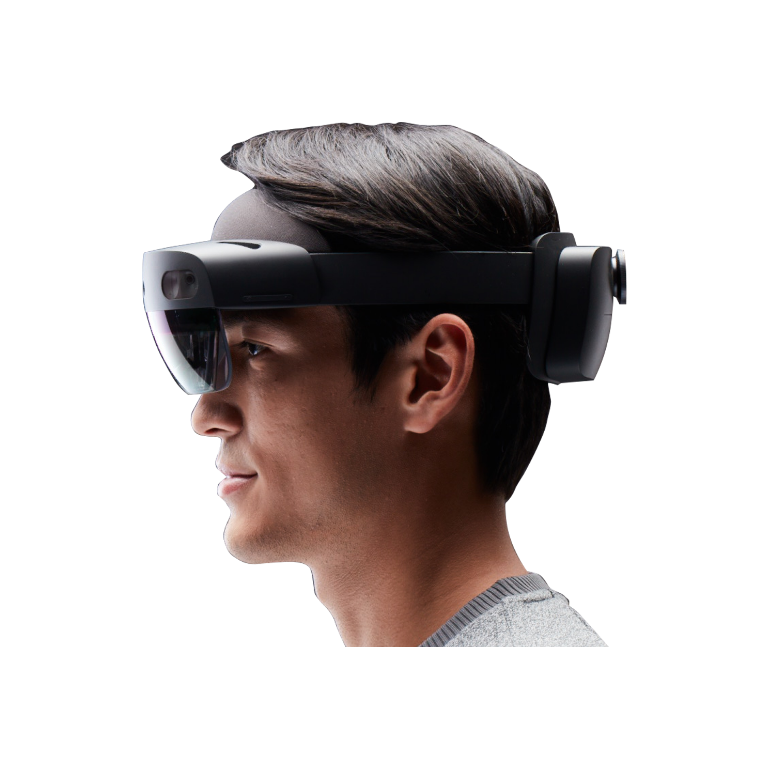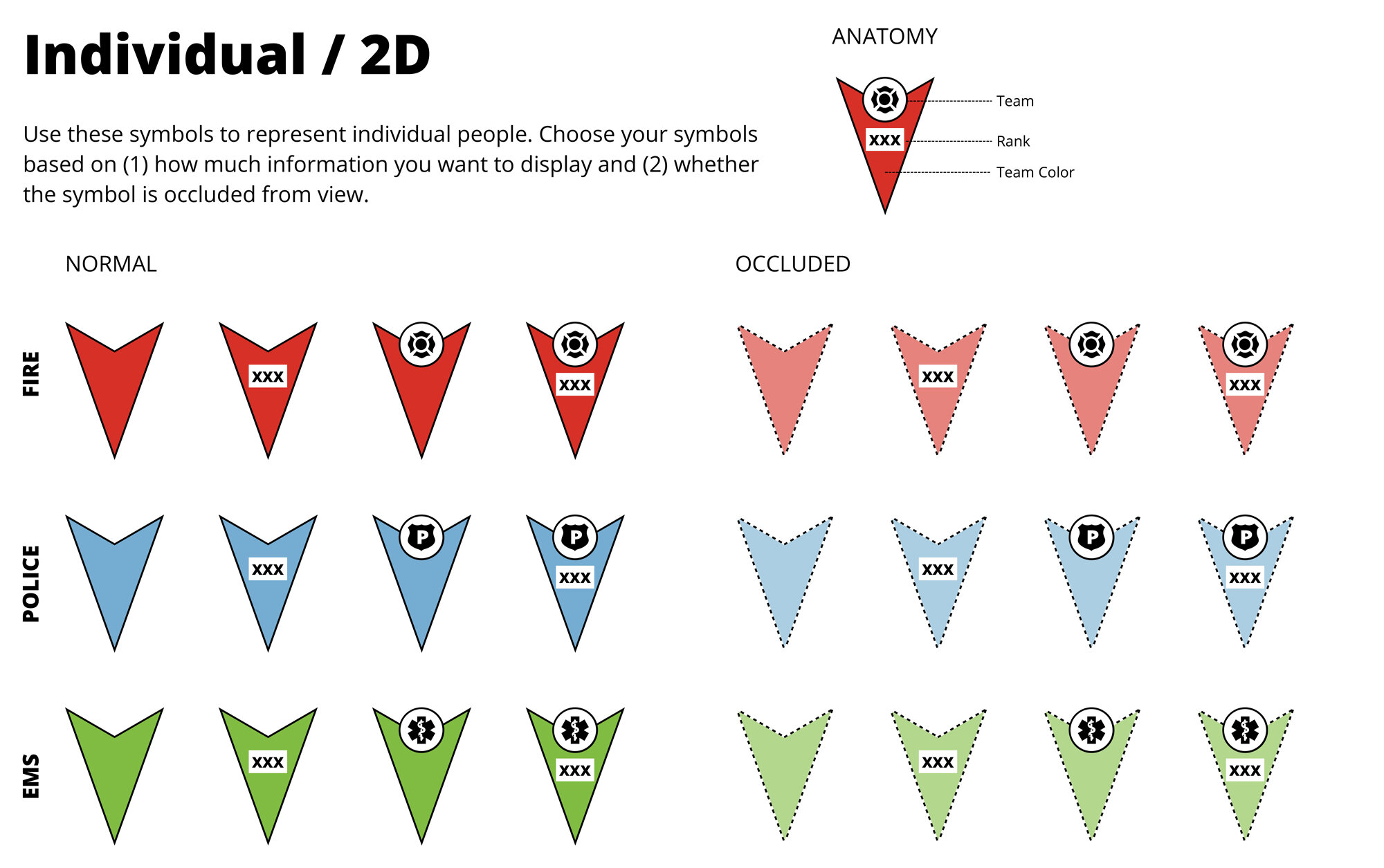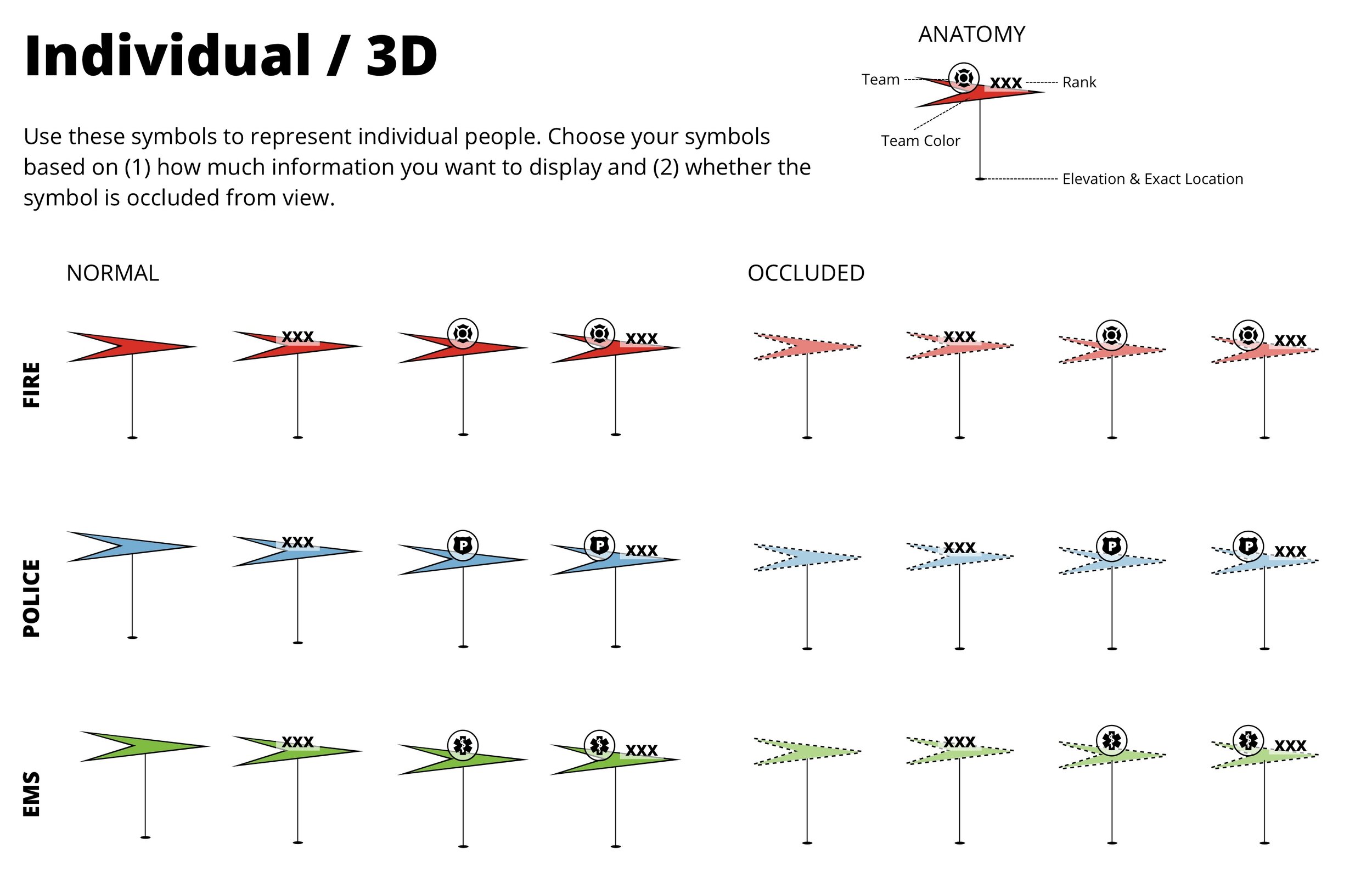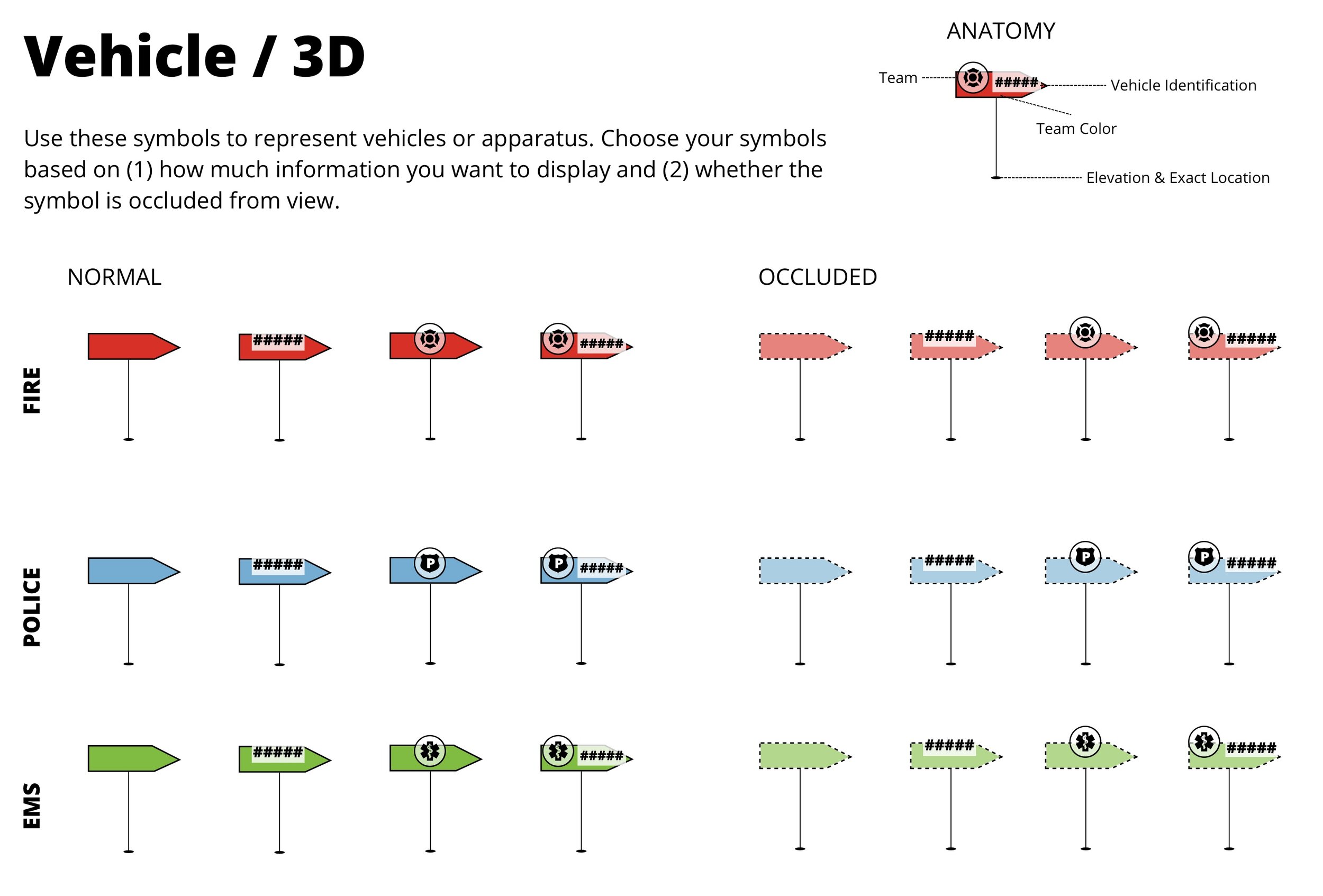Innovating at Scale with Indiana University
Creating an augmented reality design system where none have existed before is hard.
But wow is it rewarding.

The Challenge
Create an augmented reality design system that assists both Incident Command and First Responders in successful, more efficient emergency scenario resolution, at scale.
The system had to work as a 3D display and a 2D display, meaning the patterns and symbols needed to be recognizable across both display mediums at any given time.
There isn’t a system to compare this work to, or a set of augmented reality information display standards to benchmark against. Through research, I extrapolated a working set of user-centric best practice standards to start with, though I have no doubt this will evolve over time as the Augmented Reality industry matures.
A 2D Map depicting a building fire incident response
The same building fire incident response depicted in 3D
Technology
We designed for a head-worn display like the Microsoft Hololens, but ensured that whatever we created would work on a 2d display like a phone, tablet, or computer monitor as well.
Timeline
We completed research, sketches, rounds of feedback, and lo-fi to hi-fi prototypes over the course of 4 months.
Scope
While considering use cases, we narrowed our scope to map information display and symbol indicators. More opportunity exists to flesh out the system further with card components for large information display.
Background
Dr. Sonny Kirkley has been a trailblazer in emergency response systems both in academia and at a local level and national level. I approached him about closing out my Master’s degree with an independent study– where I could develop a design system to match the features and functionality he needed for an augmented reality prototype.
Stakeholders
Dr. Sonny Kirkley, Director Of User Experience at IU Crisis Technologies Innovation Lab
Dr. Davide Bolchini, Human-Centered Computing Department Chair
Personas
Incident Command
Incident Command comprises a group of agencies working together to solve an emergency scenario. It’s usually composed of higher-ranking non-field agents located off-site that are coordinating their first responder resources. Sometimes Incident Commanders can be in the field.
Field Responder
Field Responders are team members that physically respond to a scenario, like a firefighter to a building fire or water rescue.
The 2D Anatomy of an Individual Field Responder Symbol
With colors and symbols designating the responder’s team (Fire, Police, EMS), the system accounts for color blindness, information preference display, and elevation level.
Initial Rough Sketches
Exploring Height Relativity in 3D
Individual 2D Symbol
Individual 3D Symbol
Vehicle 2D Symbol
Vehicle 3D Symbol
Zones (2D / 3D)
Beacons
2D Occlusion
3D Occlusion
3D Occlusion Guide











